Perceiving, Understanding, and Interacting through Touch
Roberto Calandra
SCADS.AI - 18 March 2024
Learning, Adaptive Systems, and Robotics (LASR) Lab

Why Robots?
Disaster Relief

Industrial Automation


Exploration


Medicine & Eldercare


State of the Art in Robotics
From YouTube: https://www.youtube.com/watch?v=g0TaYhjpOfo
What are we missing?

Key Challenges
-
Multi-modal Sensing
-
Adaptive Hardware configuration
-
Quick adaptation to new tasks
Touch Sensing
Morphological adaptation
In this talk
Model-based
Reinforcement Learning
Hardware
Software


The Importance of Touch
From the lab of Dr. Ronald Johansson, Dept. of Physiology, University of Umea, Sweden
The Importance of Touch (in Humans)
Touch Sensing is Hard
- Interdisciplinary field which requires vertical integration. From hardware design to touch processing; From robot control to applications.
- Many ad-hoc solutions and little re-use of existing components
(i.e., We keep reinventing the wheel over and over) - High entrance bar for new researchers and practitioners
- How can we lower the entrance bar?
- How can we improve reproducibility?
- How can we accelerate research by re-using existing components?
Standardization, and the creation of an ecosystem of tools
Hardware
Software


The Next Breakthrough will be in Touch
Audio
Touch
Vision

(~1890)
(~1990)
(2020s ?)
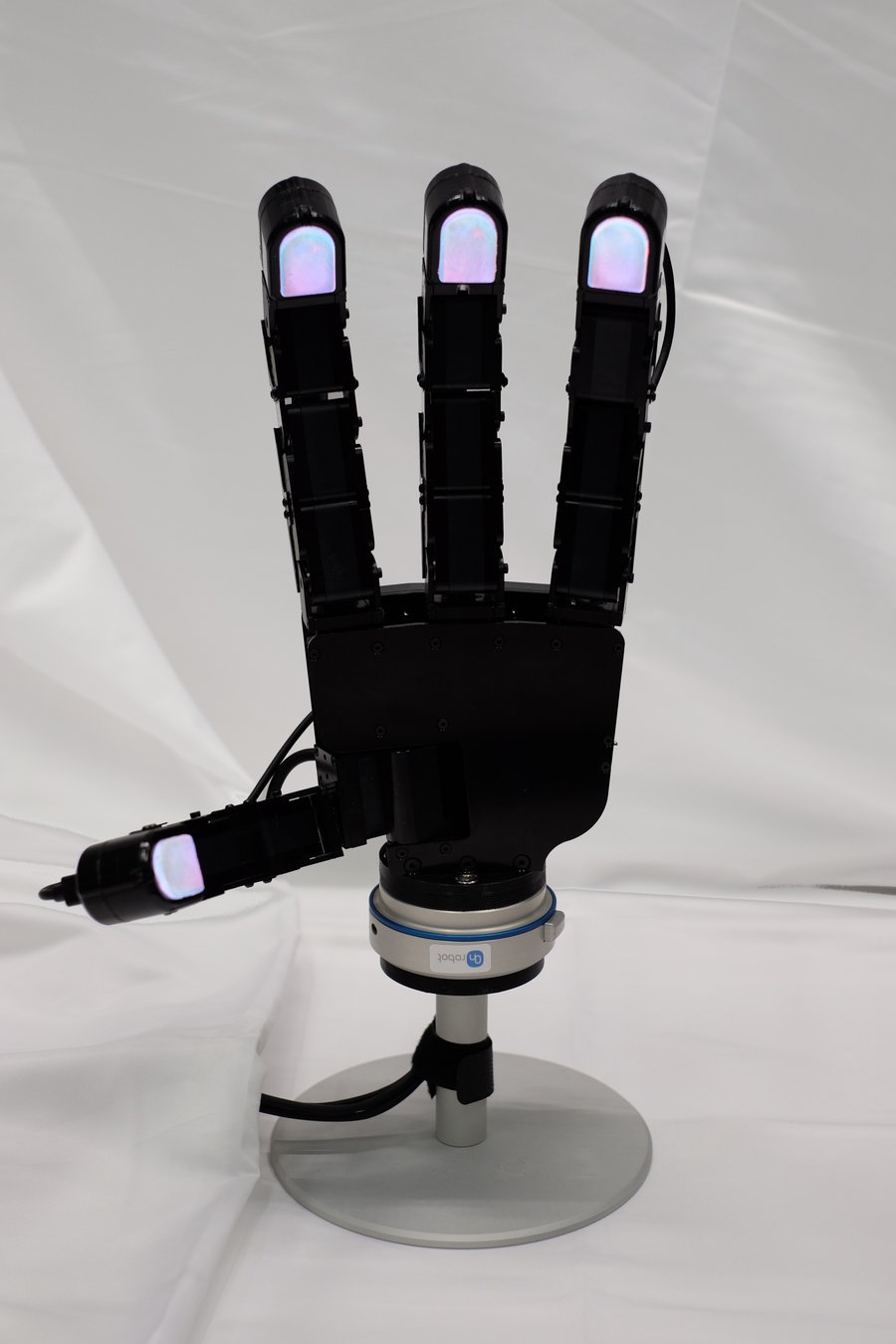






Grand Vision

+ Applications
+ Community
Hardware
Tactile Sensors in Robotics
Important factors:
- Availability
- Cost
- Form factor
- Capabilities
(e.g., what is measured, resolution) - Reliability

Many many sensors in the literature:
- Most are prototypes
- A handful are commercially available
or can be easily manufactured


[Wilson et al., 2019]
[Piacenza et al., 2020]
[ Fischel et al., 2012]

[Zhang et al., 2018]

[Church et al., 2019]
Vision-based Tactile Sensors
[Hillis, W. D. A High-Resolution Imaging Touch Sensor The International Journal of Robotics Research, 1982, 1, 33-44 ]
[Tanie, K.; Komoriya, K.; Kaneko, M.; Tachi, S. & Fujikawa, A. A high resollution tactile sensor Proc. of 4th Int. Conf. on Robot Vision and Sensory Controls, 1984, 251, 260]
[Begej, S. Planar and finger-shaped optical tactile sensors for robotic applications IEEE Journal on Robotics and Automation, 1988, 4, 472-484]
[Kamiyama, K.; Kajimoto, H.; Kawakami, N. & Tachi, S. Evaluation of a vision-based tactile sensor IEEE International Conference on Robotics and Automation (ICRA), 2004, 2, 1542-1547 ]
[Johnson, M. K. & Adelson, E. H. Retrographic sensing for the measurement of surface texture and shape Computer Vision and Pattern Recognition (CVPR), 2009, 1070-1077]
[Abad, A. C. & Ranasinghe, A. Visuotactile Sensors With Emphasis on GelSight Sensor: A Review IEEE Sensors Journal, 2020, 20, 7628-7638]

Credit:
[Yuan, W.; Dong, S. & Adelson, E. H. GelSight: High-Resolution Robot Tactile Sensors for Estimating Geometry and Force Sensors, Multidisciplinary Digital Publishing Institute, 2017]
DIGIT

Lambeta, M.; Chou, P.-W.; Tian, S.; Yang, B.; Maloon, B.; Most, V. R.; Stroud, D.; Santos, R.; Byagowi, A.; Kammerer, G.; Jayaraman, D. & Calandra, R.
DIGIT: A Novel Design for a Low-Cost Compact High-Resolution Tactile Sensor with Application to In-Hand Manipulation
IEEE Robotics and Automation Letters (RA-L), 2020, 5, 3838-3845


Examples of DIGIT Measurements
Lambeta, M.; Chou, P.-W.; Tian, S.; Yang, B.; Maloon, B.; Most, V. R.; Stroud, D.; Santos, R.; Byagowi, A.; Kammerer, G.; Jayaraman, D. & Calandra, R.
DIGIT: A Novel Design for a Low-Cost Compact High-Resolution Tactile Sensor with Application to In-Hand Manipulation
IEEE Robotics and Automation Letters (RA-L), 2020, 5, 3838-3845

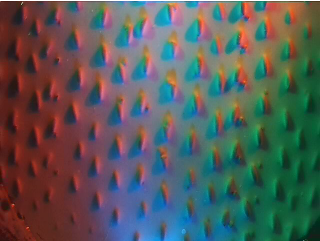

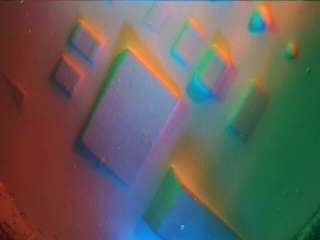
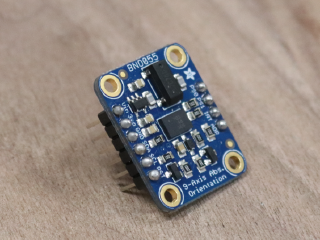
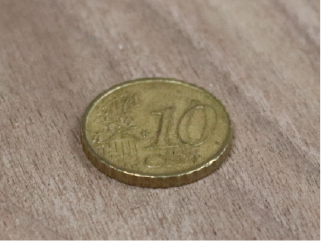
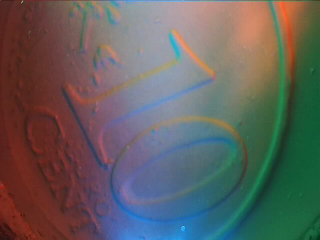
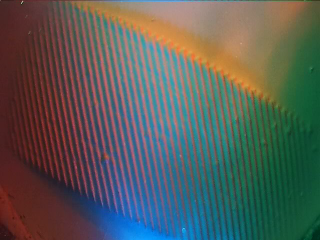
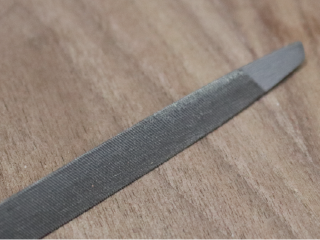
Comparison
BioTac
DIGIT

~15,000 $
Cost
~15 $*
Resolution
29
taxels
307,200
taxels
Mounted on multi-finger hands


Open-source



1000x
Higher resolution
1000x
Cheaper
* component cost for 1000 units, not including labor

DIGIT Commercialization
-
Replicated in 20+ universities
-
Yet, it can still be challenging to manufacture a sensor without mechanical/electrical experience
-
Partnership with GelSight Inc. to commercialize DIGIT
-
Most widespread tactile sensor in robotics!
-
Part of Mitsubishi Electric RAISE (Robotics as an Intelligent Services Ecosystem)
-


OmniTact
Padmanabha, A.; Ebert, F.; Tian, S.; Calandra, R.; Finn, C.; Levine, S.
OmniTact: A Multi-Directional High-Resolution Touch Sensor
IEEE International Conference on Robotics and Automation (ICRA) , 2020

Evetac
Funk, N.; Helmut, E.; Chalvatzaki, G.; Calandra, R. & Peters, J.
Evetac: An Event-based Optical Tactile Sensor for Robotic Manipulation
Under Review, 2023 https://arxiv.org/abs/2312.01236
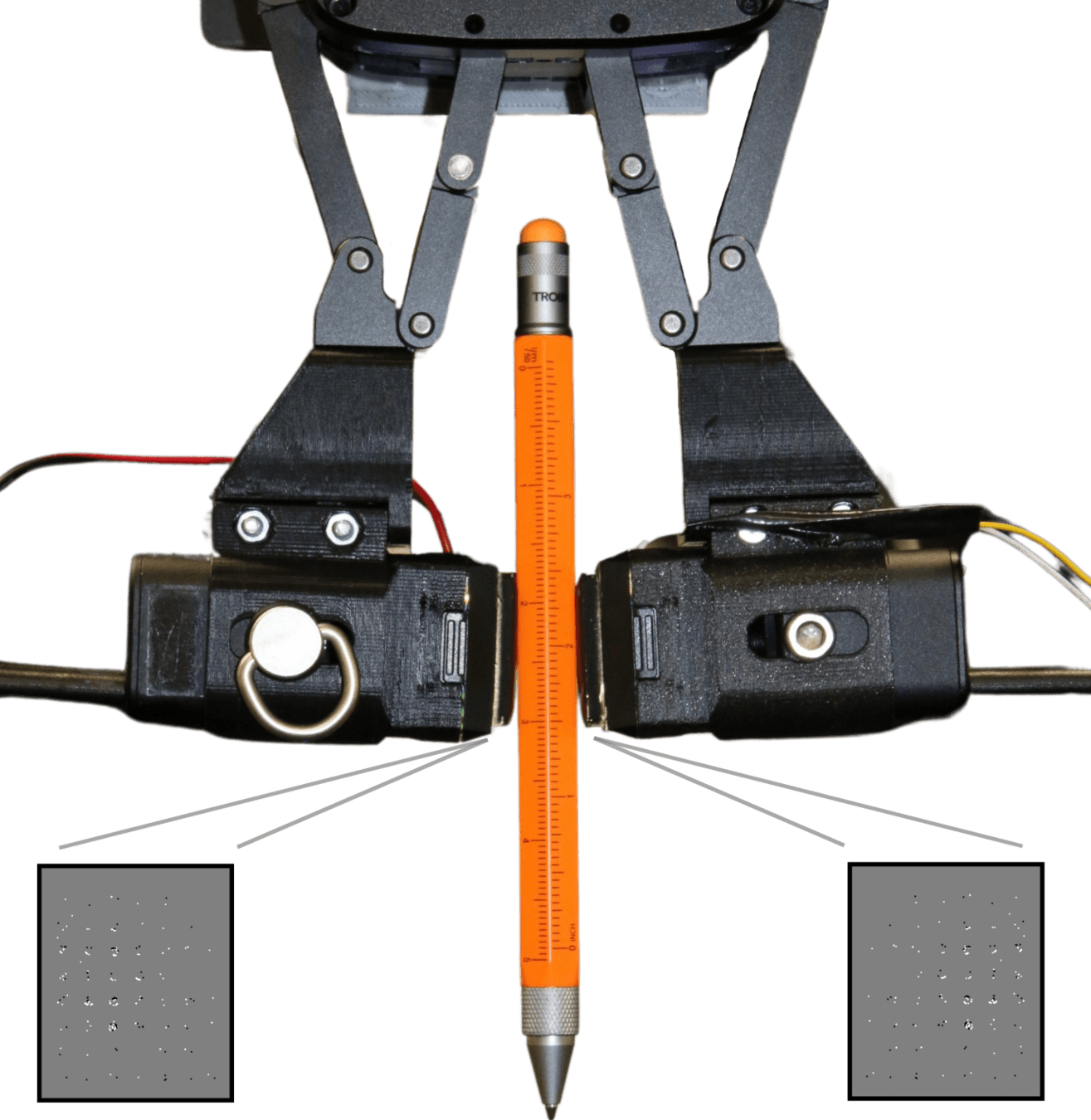
- Neuromorphic tactile sensor
- Event-based
- Up to 1KHz
- Modular and using off-the-shelf components
DIGIT Pinky
Di, J.; Dugonjic, Z.; Fu, W.; Wu, T.; Mercado, R.; Sawyer, K.; Most, V. R.; Kammerer, G.; Speidel, S.; Fan, R. E.; Sonn, G.; Cutkosky, M. R.; Lambeta, M. & Calandra, R.
Using Fiber Optic Bundles to Miniaturize Vision-Based Tactile Sensors
Under Review, 2024 https://arxiv.org/abs/2403.05500
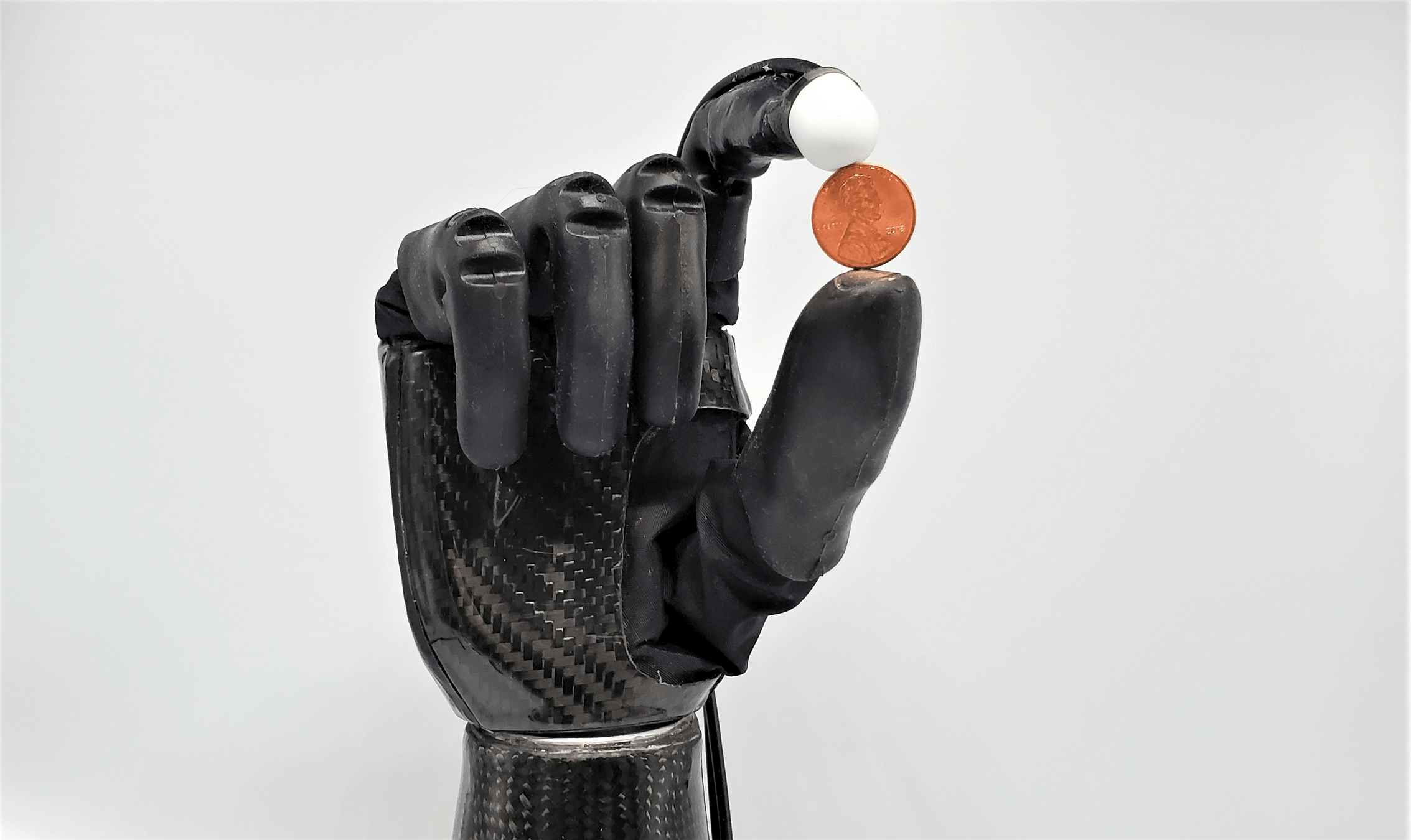
DIGIT Pinky
Di, J.; Dugonjic, Z.; Fu, W.; Wu, T.; Mercado, R.; Sawyer, K.; Most, V. R.; Kammerer, G.; Speidel, S.; Fan, R. E.; Sonn, G.; Cutkosky, M. R.; Lambeta, M. & Calandra, R.
Using Fiber Optic Bundles to Miniaturize Vision-Based Tactile Sensors
Under Review, 2024 https://arxiv.org/abs/2403.05500
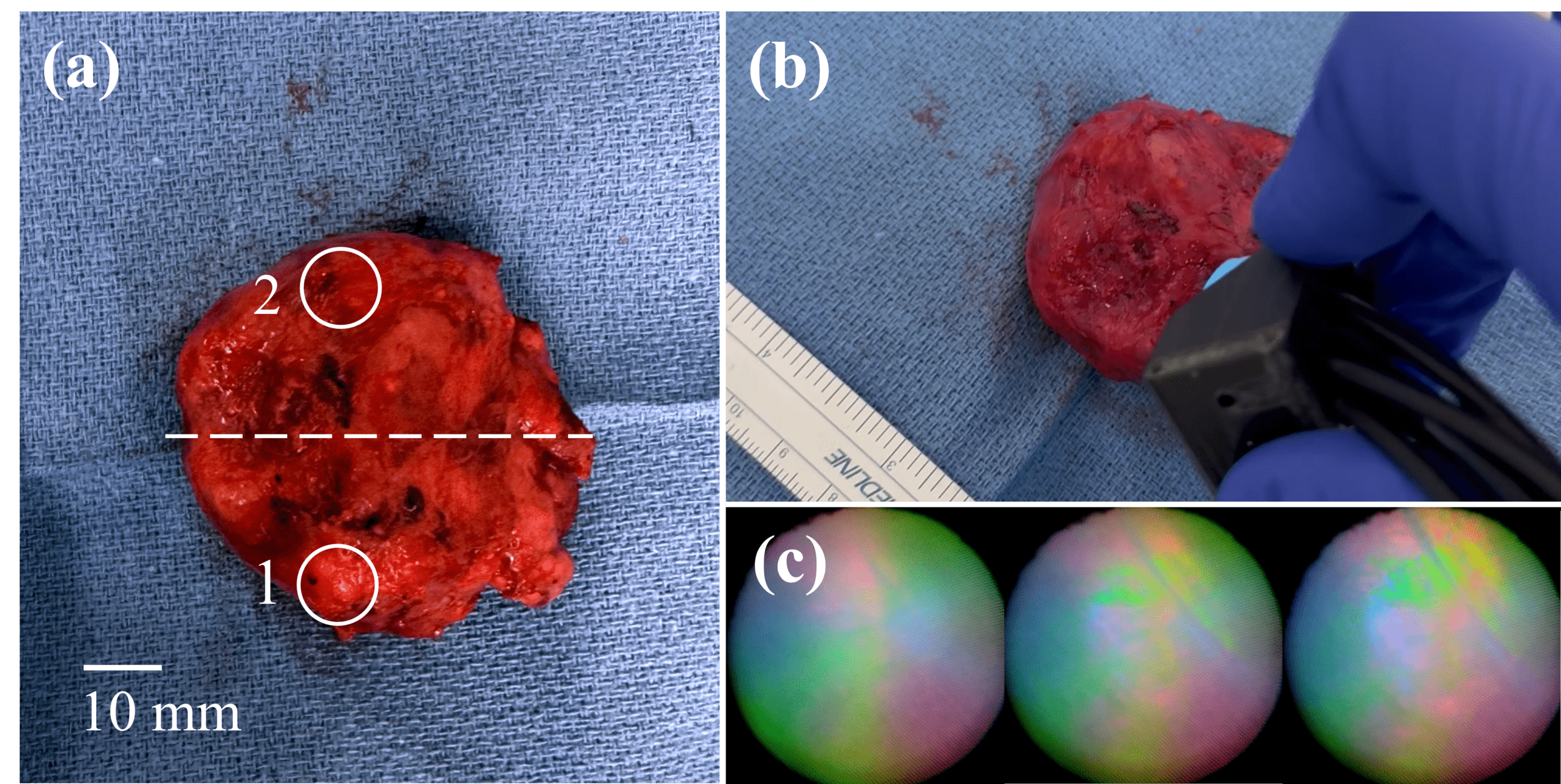
Touch Processing
(i.e., AI for Touch)
Creating a New Science of Touch Processing
Some of the open questions:
- What are good features for touch?
-
Do we need sensor standardization?
- What representation do we want/need for touch?
- What sensorial information do we even want/need for touch?
- What are the useful structures in computational models for touch?
- What are the useful metrics to characterize touch?
- How can we quantify the human psychophysics of touch?
- What are the different tasks that can benefit from touch?
- What are meaningful benchmarks for touch processing?
Very limited literature about computational processing of touch sensing
PyTouch: A Machine Learning Library
for Touch Processing
Goal: Create the equivalent of OpenCV for Touch
Lambeta, M.; Xu, H.; Xu, J.; Chou, P.-W.; Wang, S.; Darrell, T. & Calandra, R.
PyTouch: A Machine Learning Library for Touch Processing
IEEE International Conference on Robotics and Automation (ICRA), 2021, Online: https://arxiv.org/abs/2105.12791


What Representations do we Need for Touch?
Lambeta, M.; Xu, H.; Xu, J.; Chou, P.-W.; Wang, S.; Darrell, T. & Calandra, R.
PyTouch: A Machine Learning Library for Touch Processing
IEEE International Conference on Robotics and Automation (ICRA), 2021


Kerr, J.; Huang, H.; Wilcox, A.; Hoque, R.; Ichnowski, J.; Calandra, R. & Goldberg, K.
Self-Supervised Visuo-Tactile Pretraining to Locate and Follow Garment Features
Robotics: Science and Systems (RSS) 2023, Online: https://arxiv.org/pdf/2209.13042

Transfer Across Sensors
Transfer across Tasks
Touch and Language
Fu, L.; Datta, G.; Huang, H.; Panitch, W. C.-H.; Drake, J.; Ortiz, J.; Mukadam, M.; Lambeta, M.; Calandra, R. & Goldberg, K.
A Touch, Vision, and Language Dataset for Multimodal Alignment
arxiv preprint, 2024 https://arxiv.org/abs/2402.13232
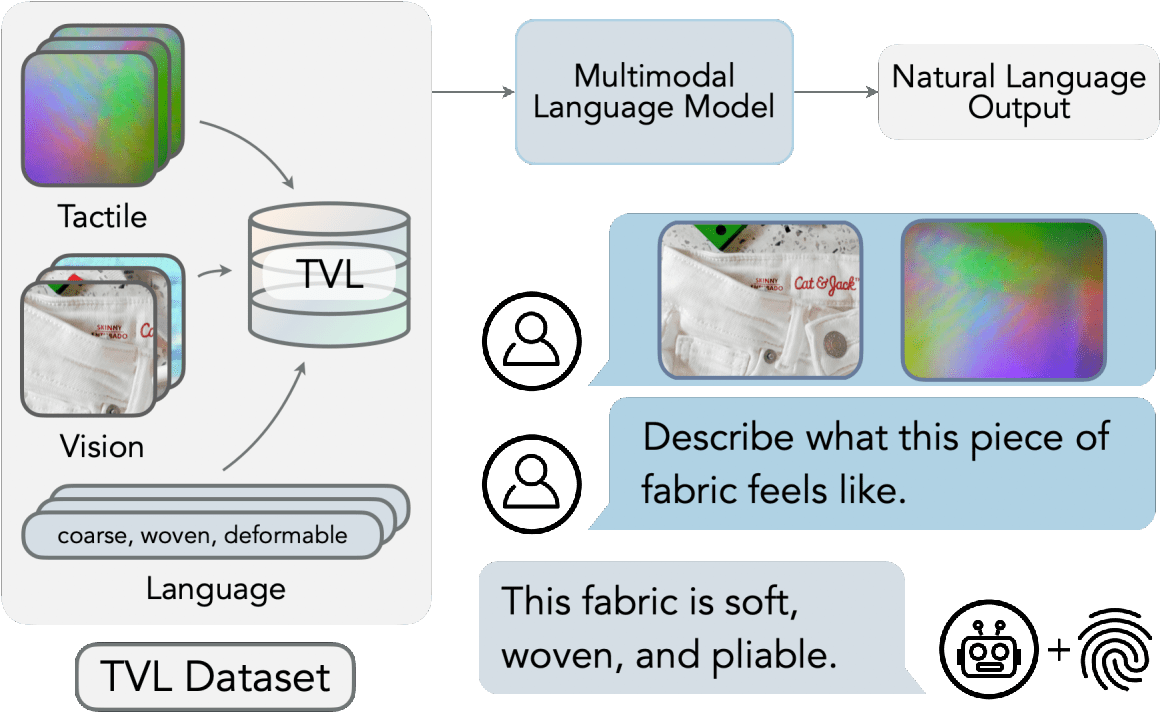
Applications
Key Applications
Robotics
Metaverse
(AR/VR)
E-commerce
Medical

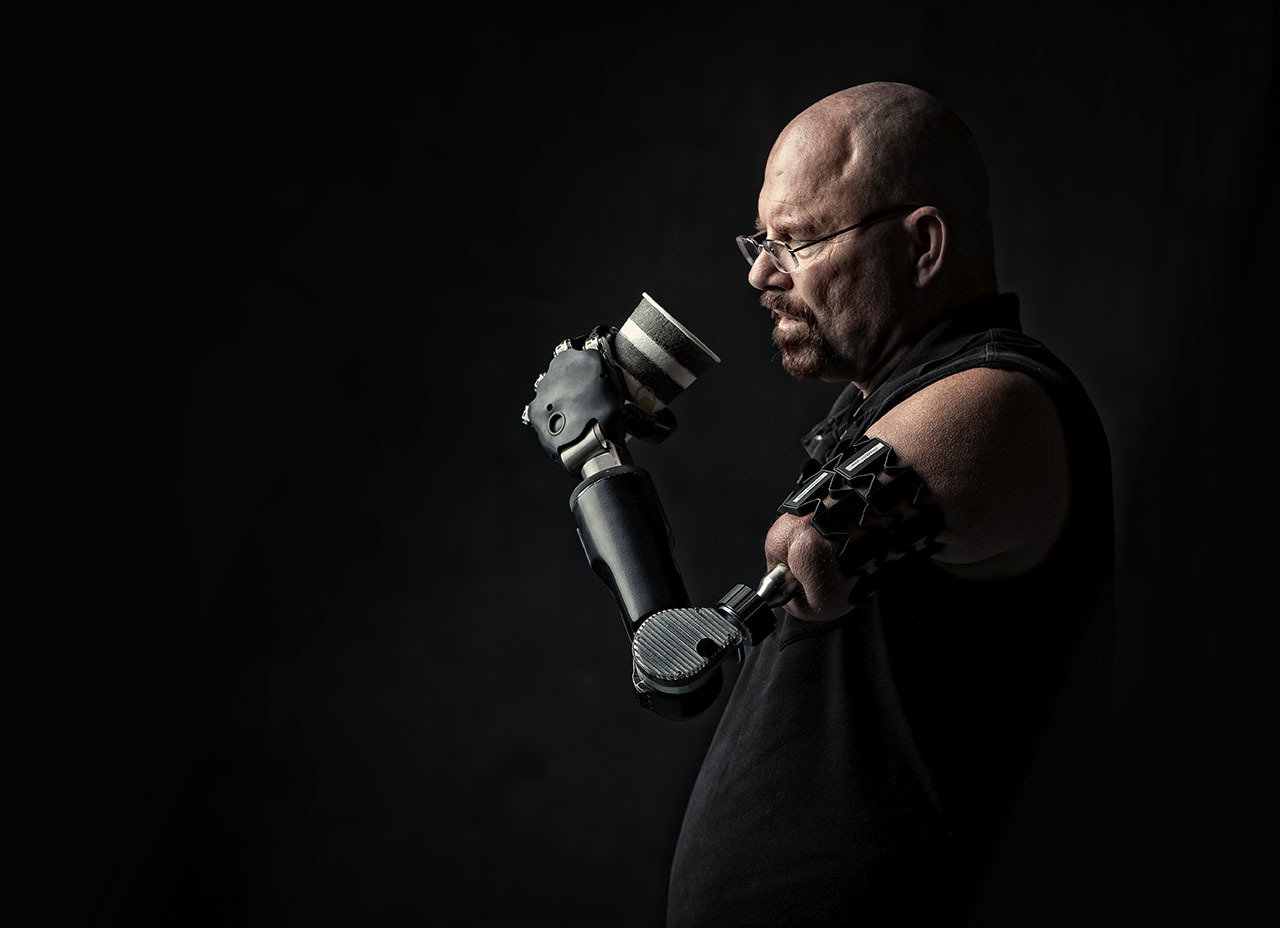

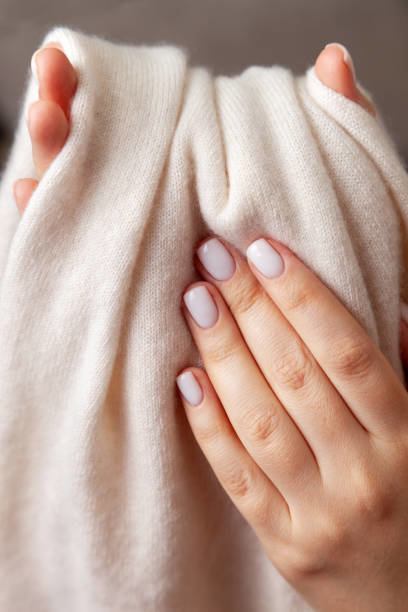
Some Touch Sensing Applications
Predicting Grasp Stability
[Calandra et al. 2017]
Learning how to (Re)Grasp
[Calandra et al. 2018]
Active Tactile Exploration
[Yi at al. 2016]
3D Reconstruction from Vision and Touch
[Smith et al. 2020; Smith et al. 2021]
Identify Objects from Touch
[Lin et al. 2019]





Learning to Play Piano from Touch
[Xu at al. 2022]
Visuo-tactile Learned Model

Calandra, R.; Owens, A.; Jayaraman, D.; Yuan, W.; Lin, J.; Malik, J.; Adelson, E. H. & Levine, S.
More Than a Feeling: Learning to Grasp and Regrasp using Vision and Touch
IEEE Robotics and Automation Letters (RA-L), 2018, 3, 3300-3307
Self-supervised Data Collection
- Setting:
- 7-DOF Sawyer arm
- Weiss WSG-50 Parallel gripper
- one GelSight on each finger
- Two RGB-D cameras in front and on top
- (Almost) fully autonomous data collection:
- Estimates the object position using depth, and perform a random grasp of the object.
- Labels automatically generated by looking at the presence of contacts after each attempted lift
Examples of Training Objects
Collected 6450 grasps from over 60 training objects over ~2 weeks.

Grasp Success on Unseen Objects
83.8% grasp success on 22 unseen objects
(using only vision yields 56.6% success rate)

Lambeta, M.; Chou, P.-W.; Tian, S.; Yang, B.; Maloon, B.; Most, V. R.; Stroud, D.; Santos, R.; Byagowi, A.; Kammerer, G.; Jayaraman, D. & Calandra, R.
DIGIT: A Novel Design for a Low-Cost Compact High-Resolution Tactile Sensor with Application to In-Hand Manipulation
IEEE Robotics and Automation Letters (RA-L), 2020, 5, 3838-3845
Achieving Human-level Manipulation with Robots
Learning General In-Hand Rotation
Qi, Haozhi, Brent Yi, Sudharshan Suresh, Mike Lambeta, Yi Ma, Roberto Calandra, and Jitendra Malik.
General In-Hand Object Rotation with Vision and Touch.
Conference on Robot Learning (CORL). 2023 https://arxiv.org/abs/2309.09979
Tactile SLAM
Suresh, S.; Qi, H.; Wu, T.; Fan, T.; Pineda, L.; Lambeta, M.; Malik, J.; Kalakrishnan, M.; Calandra, R.; Kaess, M.; Ortiz, J. & Mukadam, M.
Neural feels with neural fields: Visuo-tactile perception for in-hand manipulation
Under Review, 2023 https://arxiv.org/abs/2312.13469
To Conclude
Human Collaborators

Overview
- Touch is a key sensor modality for humans and robots
- Presented our ecosystem for research in tactile sensing aimed at simplifying integration and enable to perceive, understand, and interact through touch:
- Hardware
- Simulation
- Touch Processing
- Towards the long-term goal of making touch sensing practical and more accessible (both in research and in the real-world)
- Touch sensing is at the verge of a "digital revolution" that will make it ubiquitous and enable new applications
Thank you!
DIGIT
TACTO
PyTouch


Teaser
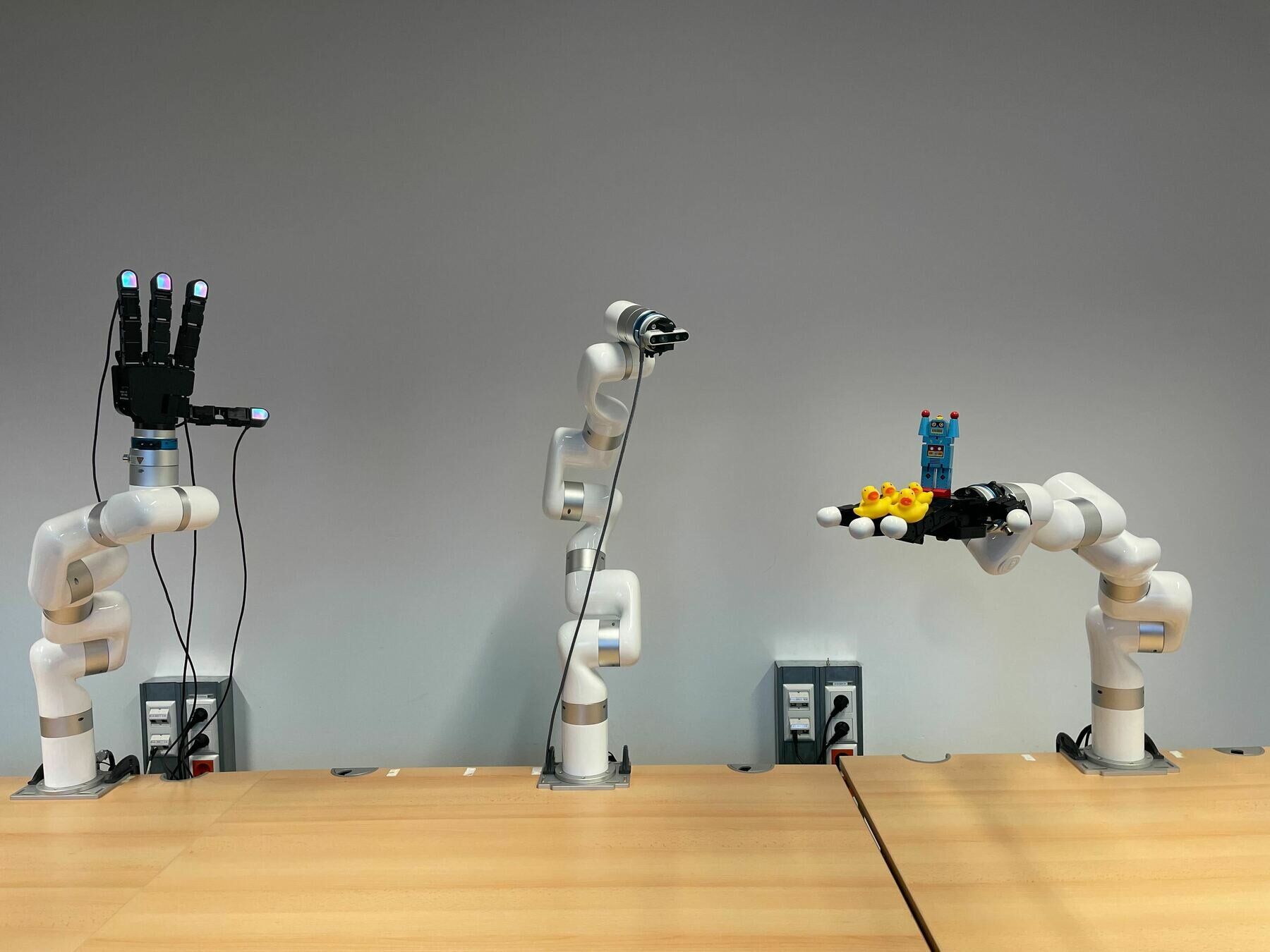
Our work on touch sensing
-
Wang, S.; Lambeta, M.; Chou, L. & Calandra, R.
TACTO: A Fast, Flexible and Open-source Simulator for High-Resolution Vision-based Tactile Sensors
IEEE Robotics and Automation Letters (RA-L), 2022, 7, 3930-3937, Online: https://arxiv.org/abs/2012.08456 - Smith, E. J.; Meger, D.; Pineda, L.; Calandra, R.; Malik, J.; Romero, A. & Drozdzal, M.
Active 3D Shape Reconstruction from Vision and Touch
Advances in Neural Information Processing Systems (NeurIPS), 2021 - Lambeta, M.; Xu, H.; Xu, J.; Chou, P.-W.; Wang, S.; Darrell, T. & Calandra, R.
PyTouch: A Machine Learning Library for Touch Processing
IEEE International Conference on Robotics and Automation (ICRA), 2021 - Smith, E. J.; Calandra, R.; Romero, A.; Gkioxari, G.; Meger, D.; Malik, J. & Drozdzal, M.
3D Shape Reconstruction from Vision and Touch
Advances in Neural Information Processing Systems (NeurIPS), 2020 - Lambeta, M.; Chou, P.-W.; Tian, S.; Yang, B.; Maloon, B.; Most, V. R.; Stroud, D.; Santos, R.; Byagowi, A.; Kammerer, G.; Jayaraman, D. & Calandra, R.
DIGIT: A Novel Design for a Low-Cost Compact High-Resolution Tactile Sensor with Application to In-Hand Manipulation
IEEE Robotics and Automation Letters (RA-L), 2020, 5, 3838-3845 - Padmanabha, A.; Ebert, F.; Tian, S.; Calandra, R.; Finn, C. & Levine, S.
OmniTact: A Multi-Directional High-Resolution Touch Sensor
IEEE International Conference on Robotics and Automation (ICRA), 2020, 618-624 - Lin, J.; Calandra, R. & Levine, S.
Learning to Identify Object Instances by Touch: Tactile Recognition via Multimodal Matching
IEEE International Conference on Robotics and Automation (ICRA), 2019, 3644-3650 - Tian, S.; Ebert, F.; Jayaraman, D.; Mudigonda, M.; Finn, C.; Calandra, R. & Levine, S.
Manipulation by Feel: Touch-Based Control with Deep Predictive Models
IEEE International Conference on Robotics and Automation (ICRA), 2019, 818-824 - Calandra, R.; Owens, A.; Jayaraman, D.; Yuan, W.; Lin, J.; Malik, J.; Adelson, E. H. & Levine, S.
More Than a Feeling: Learning to Grasp and Regrasp using Vision and Touch
IEEE Robotics and Automation Letters (RA-L), 2018, 3, 3300-3307 - Calandra, R.; Owens, A.; Upadhyaya, M.; Yuan, W.; Lin, J.; Adelson, E. H. & Levine, S.
The Feeling of Success: Does Touch Sensing Help Predict Grasp Outcomes?
Conference on Robot Learning (CORL), 2017, 314-323 - Yi, Z.; Calandra, R.; Veiga, F. F.; van Hoof, H.; Hermans, T.; Zhang, Y. & Peters, J.
Active Tactile Object Exploration with Gaussian Processes
IEEE/RSJ International Conference on Intelligent Robots and Systems (IROS), 2016, 4925-4930 - Calandra, R.; Ivaldi, S.; Deisenroth, M. P.; Rueckert, E. & Peters, J.
Learning Inverse Dynamics Models with Contacts
IEEE International Conference on Robotics and Automation (ICRA), 2015, 3186-3191 - Calandra, R.; Ivaldi, S.; Deisenroth, M. P. & Peters, J.
Learning Torque Control in Presence of Contacts using Tactile Sensing from Robot Skin
IEEE-RAS International Conference on Humanoid Robots (HUMANOIDS), 2015, 690-695
Additional Slides
1st Workshop on Touch Processing
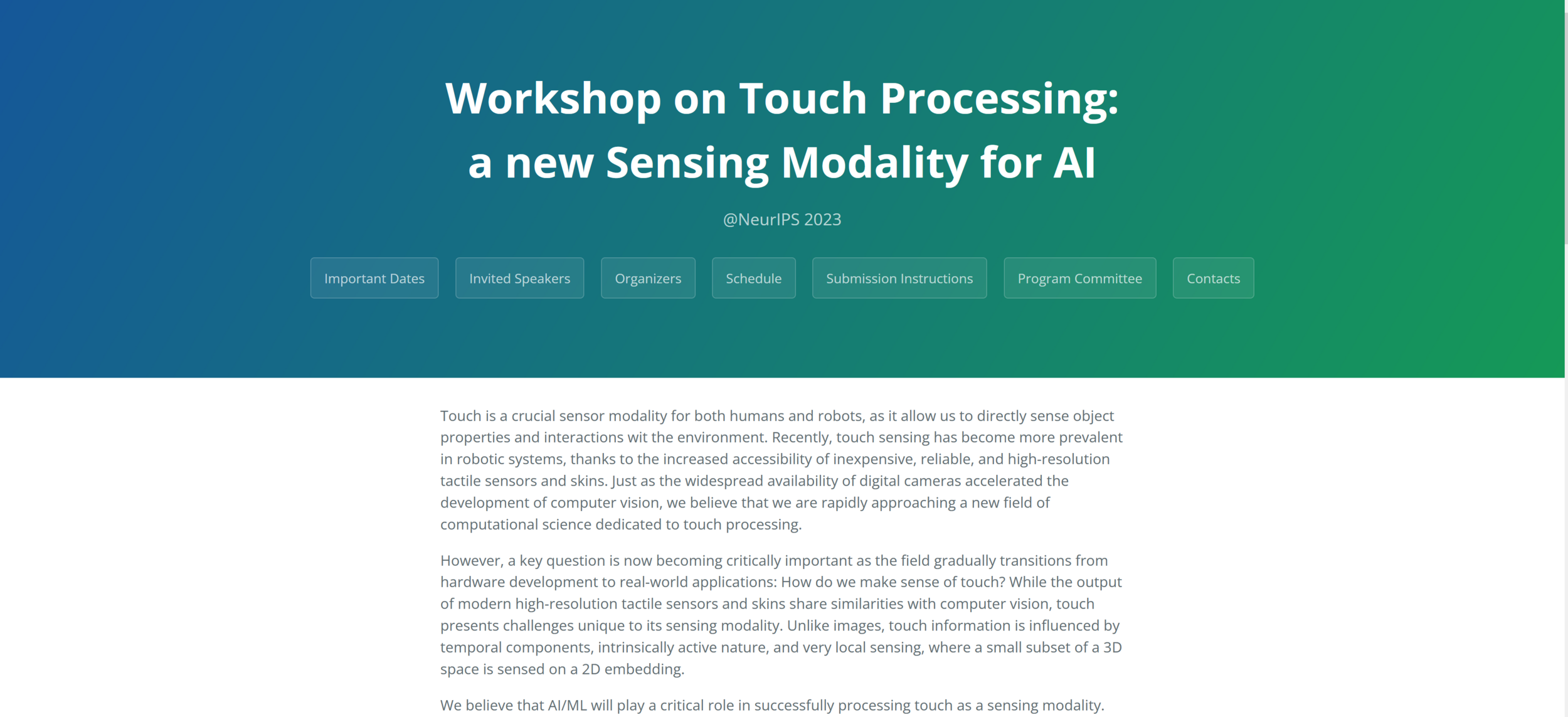
15 December 2023 @ NeurIPS
New Orleans, United States
Slack Channel

Model-based Reinforcement Learning

Lambeta, M.; Chou, P.-W.; Tian, S.; Yang, B.; Maloon, B.; Most, V. R.; Stroud, D.; Santos, R.; Byagowi, A.; Kammerer, G.; Jayaraman, D. & Calandra, R.
DIGIT: A Novel Design for a Low-Cost Compact High-Resolution Tactile Sensor with Application to In-Hand Manipulation
IEEE Robotics and Automation Letters (RA-L), 2020, 5, 3838-3845
In-Hand Object Rotation via Rapid Motor Adaptation

We are Hiring
- Post-docs
- PhD Students
- Robot Lab Manager

Touch for the Metaverse

- Touch is a deeply social and emotional sense
- How can we sense, calibrate and reproduce touch?
- How can we accurately and easily digitize objects and their physical properties into virtual worlds?



Sense
Process
Reproduce
Telepresence via Haptic Feedback

Fritsche, L.; Unverzagt, F.; Peters, J. & Calandra, R.
First-Person Tele-Operation of a Humanoid Robot
IEEE-RAS International Conference on Humanoid Robots (HUMANOIDS), 2015
Robot Learning
Code Example


Learning Grasp Stability

Calandra, R.; Owens, A.; Upadhyaya, M.; Yuan, W.; Lin, J.; Adelson, E. H. & Levine, S.
The Feeling of Success: Does Touch Sensing Help Predict Grasp Outcomes?
Conference on Robot Learning (CORL), 2017, 314-323
Traditional Sensors


Cannata, G.; Maggiali, M.; Metta, G. & Sandini, G.
An embedded artificial skin for humanoid robots
IEEE International Conference on Multisensor Fusion and Integration for Intelligent Systems (MFI), 2008, 434-438
- Resistive or Capacitive technology
- Several limitations:
- Usually, measure force or orthogonal component of force
- Relatively low density
- Usually, low-dimensional (i.e., <100) due to cost, mechanical and communication reasons
- Often need to be calibrated
Features of PyTouch
- First Machine Learning library dedicated to Touch Processing
(Based on PyTorch) - Hardware-agnostic abstractions for rapid experimentation
- Native integration with DIGIT (hardware) and Tacto (simulator)
(Working on supporting non vision-based sensors) - Platform for standardizing evaluation and comparison of different models
- Touch "as-a-service"
- Allows non-ML-experts to use SOTA ML models in their applications
- Pre-trained models (e.g., Touch detection and slip for DIGIT)
- (Can also be used for fast fine-tuning)
- Open-source -- Anybody can contribute
Lambeta, M.; Xu, H.; Xu, J.; Chou, P.-W.; Wang, S.; Darrell, T. & Calandra, R.
PyTouch: A Machine Learning Library for Touch Processing
IEEE International Conference on Robotics and Automation (ICRA), 2021, Online: https://arxiv.org/abs/2105.12791

Learning to Play Piano with Touch

Xu, H.; Luo, Y.; Wang, S.; Darrell, T. & Calandra, R.
Towards Learning to Play Piano with Dexterous Hands and Touch
IEEE/RSJ International Conference on Intelligent Robots and Systems (IROS) , 2022, online: https://arxiv.org/abs/2106.02040
Do we really need Touch?
Qi, H.; Kumar, A.; Calandra, R.; Ma, Y. & Malik J.
In-Hand Object Rotation via Rapid Motor Adaptation
Conference on Robot Learning (CORL), 2022, https://arxiv.org/abs/2210.04887
Failure Case
Understanding the Learned Model

More force = better grasp
Understanding the Learned Model

But not always ?
Understanding the Learned Model
Gentle Grasping
- Since our model considers forces, we can select grasps that are effective, but gentle
- Reduces the amount of force used by 50%, with no significant loss in grasp success


Calandra, R.; Owens, A.; Jayaraman, D.; Yuan, W.; Lin, J.; Malik, J.; Adelson, E. H. & Levine, S.
More Than a Feeling: Learning to Grasp and Regrasp using Vision and Touch
IEEE Robotics and Automation Letters (RA-L), 2018, 3, 3300-3307